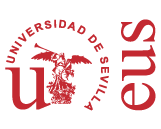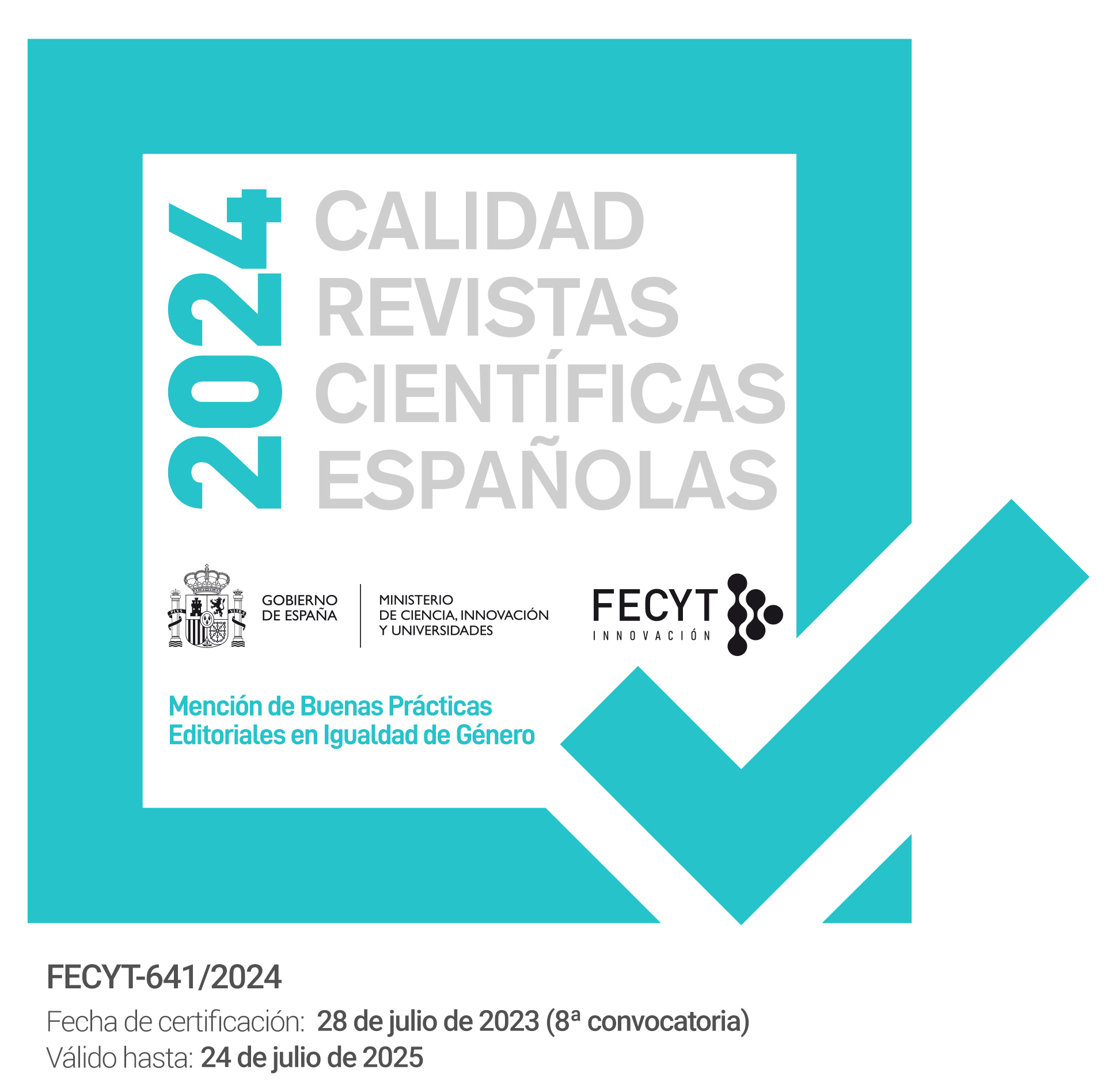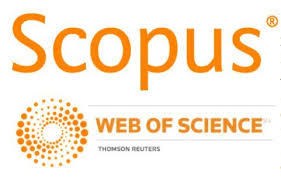A look at a list of newly created place names in a Spanish village: similarities and differences with the old toponyms
DOI:
https://doi.org/10.12795/PH.2017.i31.04Keywords:
Toponymy, place name, Sierra de Gata, phytonym, toponymical motivation.Abstract
The present work is focused on toponyms of recent creation. These new place names have generally received less attention among scholars than those with a long history, which have often generated passionate debates and academic papers about their origins. The group analyzed here was discarded from the index list resulting from a toponymy survey made in the village of Gata (Cáceres) in 2014. They are less than one hundred years old, and do not appear to be registered as toponyms in any known written source. However, their analysis reveals that the necessity for a social community to give names to the places it inhabits, and the process for the creation of new toponyms has essentially not changed for centuries.
Downloads
References
ADISGATA (1996): Guía Sierra de Gata. Encuentro con la tradición rural. Cáceres: Process Print, S. L.
ASÍN PALACIOS, Manuel (1940): Contribución a la toponimia árabe de España. Madrid: Imprenta de Estanislao Maestre.
BADÍA MAGRIT, Antonio (1949): “Mal 'roca' en la toponimia pirenaica catalana “Actas de la I Reunión de Toponimia Pirenaica. Zaragoza: C. S. I. C. 35-58.
Boletín Oficial del Estado núm. 268, de 09/11/1959, página 14326. Web site.
Boletín Oficial de la Provincia de Cáceres. < Prensa histórica. Mcu.es >
Catastro del Marqués de la Ensenada (1753): “Libro de Eclesiásticos” y “Libro de Seglares, I, II y III”. Archivo Histórico Municipal de Gata.
COROMINAS, Joan (1972): Tópica hespérica. Madrid: Gredos
COROMINAS, J. y PASCUAL, J. A. (1980-83): Diccionario crítico etimológico castellano e hispánico (5 vols.). Madrid: Gredos. DCECH
REAL ACADEMIA ESPAÑOLA (2014): Diccionario de la lengua española. 23ª ed. Madrid: Espasa-Calpe.
FERNÁNDEZ DE ESCALANTE (1974): Toponimia Ibérrica. Huelva: Imp. Mojarro.
FLAMANC le, Auguste (1958): Pinceladas de toponimia céltica. Mataró: Imprenta Minerva, S. L.
GIL CHAMORRO, Alberto (2004): Los árboles singulares en Extremadura. Mérida: Extremadura. Consejería de Agricultura y Medio Ambiente.
GUERRA HONTIVEROS, Marcelino (1987): Apuntes históricos acerca de la villa de Gata. Salamanca: Establecimiento Tipográfico de la Oliva.
GORDÓN PERAL, María Dolores (1995): Toponimia Sevillana. Ribera, Sierra y Aljarafe. Sevilla: Excelentísima Diputación de Sevilla. Fundación Luis Cernuda.
__________., (2013): Lengua, Espacio y Sociedad. Investigaciones sobre normalización toponímica en España. Berlín: Gruyter.
__________., (1992a): “Voces indocumentadas presente en la toponimia y su importancia para la historia del léxico hispánico”. Actas del II Congreso de Historia de la Lengua Española. Coord. M. Ariza Viguera. Vol. II, 982-991.
LLORENTE MALDONADO, Antonio (1947): Estudio sobre el habla de la Ribera. (Comarca Salmantina ribereña del Duero). Salamanca: Colegio Trilingüe de la Universidad (Consejo Superior de Investigaciones Científicas).
Nuevo Día: Diario de la provincia de Cáceres. < Prensa histórica. Mcu.es >
DGEH, MADOZ, Pascual (1846): Diccionario geográfico estadístico histórico de España y sus posesiones de ultramar. Madrid: Establecimiento Tipográfico Madoz y Sagasti.
MELÓN JIMÉNEZ, Miguel Ángel (1989): Extremadura en el Antiguo Régimen. Mérida: Editora Regional Extremeña
MENÉNDEZ PIDAL, Marcelino (1952): Toponimia prerrománica hispana. Madrid: Biblioteca Gredos.
PALOMAR LAPESA, Manuel (1957): La onomástica personal prelatina de la antigua Lusitania. Salamanca: CSIC, Instituto “Antonio Nebrija”, Colegio Trilingüe de la Universidad.
QUEROL, Agud (1952): “Alba topónimo pre indoeuropeo”. Actas del Primer Congreso Internacional de Estudios Pirenaicos.1950, VII, 153-161. San Sebastián.
SIMONET, Francisco J. (1987): Glosario de voces ibéricas y latinas usadas entre lo mozárabes precedido de un estudio sobre el dialecto hispano-mozárabe. Ámsterdam: Oriental Press. Reimpresión de la edición de Madrid de 1888.
VERNET GINÉS, Juan (1960): “Toponimia arábiga”. Enciclopedia lingüística hispánica. Alvar, M. (ed.) Tomo I. Madrid: C.S.I.C., 615-646.
VIGÓN, Braulio (1955): Vocabulario dialectológico del concejo de Colunga. Ed. A. M. Vigón Sánchez. Revista de Filología Española, Anejo LXIII. Madrid: CSIC, Instituto Miguel de Cervantes.
Published
How to Cite
Issue
Section
License
The printed and electronic editions of this Journal are edited by the University of Seville Editorial, and the source must be cited in any partial or total reproduction.
Unless otherwise indicated, all the contents of the electronic edition are distributed under a license of use and distribution “Attribution-NonCommercial-NoDerivatives 4.0 International” . You can view the informative version and the legal text of the license here. This fact must be expressly stated in this way when necessary.
Authors who publish in this journal accept the following conditions:
- The author/s retain copyright and grant the journal the first publication right, and accept it to be distributed with the Creative Commons By NC ND 4.0 licence, which allows third parties to use what is published whenever they mention the authorship of the work and the first publication in this journal and whenever they do not make commercial use and reuse it in the same way.
- Authors can make other independent and additional contractual agreements for the non-exclusive distribution of the article published in this journal (e.g., include it in an institutional repository or publish it in a book) provided they clearly indicate that the work was published for the first time in this journal.
Authors are allowed and recommended, once the article has been published in the journal Philologia Hispalensis (online version), to download the corresponding PDF and disseminate it online (ResearchGate, Academia.edu, etc.) as it may lead to productive scientific exchanges and to a greater and faster dissemination of published work (see The Effect of Open Access).
Accepted 2018-05-15
Published 2018-06-14
- Abstract 340
- PDF 64
- EPUB 27
- HTML 56







